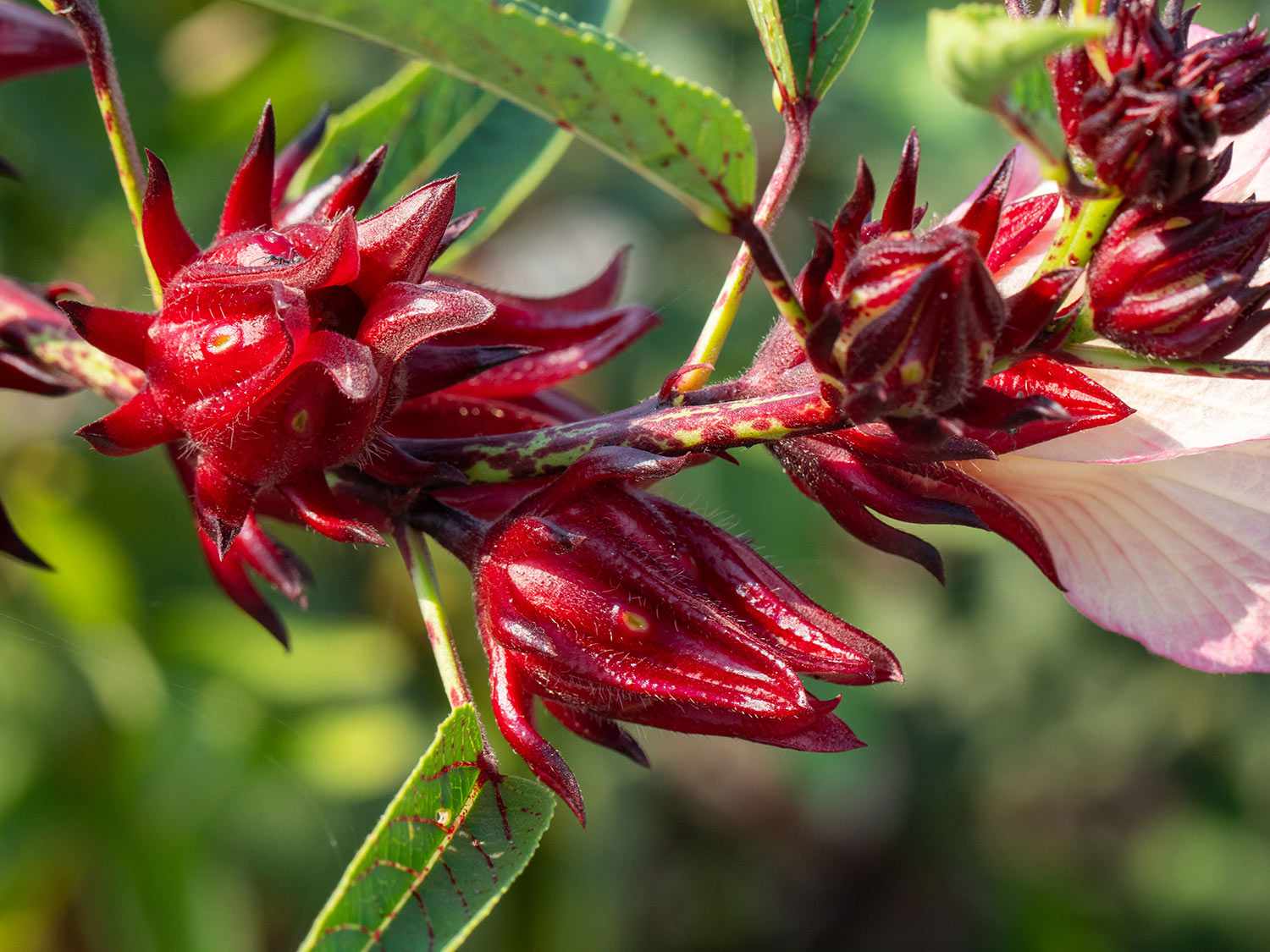Hibiscus Tea: A Tart Tradition with Heart Health Benefits

When I brew a cup of hibiscus tea, I’m struck by its jewel-like color—deep ruby red, almost glowing. It feels like holding a little potion in my hands. But beyond its beauty and refreshing tartness, hibiscus may also give our arteries a helping hand.
Blood pressure and stroke risk have been on my mind lately as I support my mom through her heart and vascular challenges. That’s why hibiscus tea caught my attention. Could something so simple, so everyday, really make a difference?
The Science of Hibiscus
One of the most cited studies on hibiscus tea comes out of Tufts University. In a double-blind randomized controlled trial, participants with prehypertension drank three cups of hibiscus tea daily. After six weeks, their systolic blood pressure dropped by an average of 7 mmHg compared to placebo—a meaningful reduction that can translate to lower stroke and heart attack risk. Systolic pressure is the top number in a blood pressure reading, the pressure in your arteries when your heart contracts.

Hibiscus is rich in polyphenols like anthocyanins (the same pigments that color blueberries and red cabbage). These compounds appear to improve the body’s ability to produce and preserve nitric oxide, a molecule that relaxes and widens blood vessels. You might remember talking about nitric oxide in my post on kale. There’s also evidence that hibiscus may work like a natural ACE inhibitor, blocking the enzyme that constricts blood vessels.
In fact, some studies suggest strong hibiscus brews may approach the effect size of mild antihypertensive drugs. That doesn’t mean we should toss prescriptions aside—but it does mean this humble flower has real therapeutic potential.
And here’s a fun fact: in antioxidant lab tests, hibiscus outperforms even green tea.

How Much, How Strong?
Most research uses 2–3 cups a day. More potent brews have a bigger effect, but even a few cups of hibiscus, hot or cold, can help. Dr. Greger highlights hibiscus as one of the most effective dietary interventions for blood pressure in his book, How Not to Die.
A note of caution: Hibiscus is naturally high in manganese, and it may, due to its acid content, make aluminum in the tea more absorbable. Drinking more than about one quarter a day can overshoot the safe intake. Moderation is key.

Nutrition & Safety Considerations
Hibiscus is generally safe, but there are a few watch-outs:
- Teeth: The acidity of hibiscus can erode enamel. Rinse your mouth with water after drinking.
- Pregnancy: Hibiscus may stimulate the uterus—avoid during pregnancy.
- Blood pressure meds: Combining hibiscus with antihypertensives can sometimes lower BP too much. Watch for symptoms and work with your doctor to adjust the medications if you'd like to keep drinking the hibiscus tea.
- Kidney stones: Hibiscus contains oxalates, which may contribute in susceptible people.
- Allergies: Rare, but possible for those sensitive to the mallow family (like okra).
From Roselle to Sorrel
The hibiscus we drink is Hibiscus sabdariffa, also called roselle. It’s not the ornamental hibiscus that dots tropical gardens, and it’s not the common sorrel weed—though in the Caribbean, hibiscus tea is called sorrel.

The part we use is the calyx, the fleshy cup that holds the seed pod after the flower fades. Farmers harvest, dry, and ship these calyces worldwide. Roselle thrives in tropical and subtropical climates—West Africa, India, Southeast Asia, Mexico, and the Caribbean are major producers.
Because it’s a relatively low-input crop, hibiscus can be grown sustainably, particularly when sourced from smallholder farmers. Buying organic or fair-trade hibiscus supports both health and livelihoods. Loose-leaf options also help avoid the microplastics found in some tea bags.
What About Other Teas?
Hibiscus isn’t the only herbal brew with heart benefits.
- Green tea: Modestly lowers blood pressure and improves vascular health, likely through catechins.
- Oolong and black tea: Mixed evidence, but both may support endothelial function.
- Chamomile and rooibos: Preliminary studies show antioxidant and mild blood pressure effects.

Two less familiar but intriguing options:
- Hawthorn tea: Long used in European folk medicine for the heart. Modern trials suggest it may modestly lower diastolic BP and improve cardiac output, but results are mixed. It can interact with heart medications, such as digoxin, so caution is advised and consultation with a physician is recommended.
- Olive leaf tea: Rich in oleuropein, a polyphenol that supports blood pressure and cholesterol balance. Some studies show reductions comparable to mild ACE inhibitors. As with hibiscus, olive leaf can interact with blood pressure or diabetes meds. Always check with your doctor before starting it.
If you’re curious, these teas are worth exploring—but hibiscus remains the standout for well-documented effects.
Brewing a Better Future
Want to try hibiscus tea for yourself? Start with a simple hot brew (1–2 tablespoons dried hibiscus in 8 oz boiling water for 5–10 minutes) or make a cold brew overnight in the fridge. Add ginger, cinnamon, or mint for variation. Sweeten lightly (but don't use alcohol sugars like xylitol or erythritol due to evidence that they have negative impacts on heart health), or add orange slices or other fruit if you like. If drinking cold, some folks like to add a natural ginger ale or sparkling water.
Try swapping one sugary beverage or soda for hibiscus tea each day. It’s a simple, sustainable step toward better blood pressure, better heart health, and connection to a long global tradition.
Resources
Dr. Greger's video and resource list for hibiscus tea
Medical News Today on hibiscus tea
Check out my full website.
Explore my bookshop.org store for books on the biome and related subjects.
(This blog is not intended to diagnose or treat disease. I am not a physician. Please consult your physician for any medical advice. Thanks.)
Affiliate note: I have affiliate relationships with Bookshop, Azure Standard, and Amazon. If you click through and make a purchase, I may earn a small commission at no extra cost to you. I strongly support both Azure and Bookshop for their mission-driven models, and I also include Amazon links, as I know many people find it the most convenient and affordable option. As an Amazon Associate, I earn from qualifying purchases.




